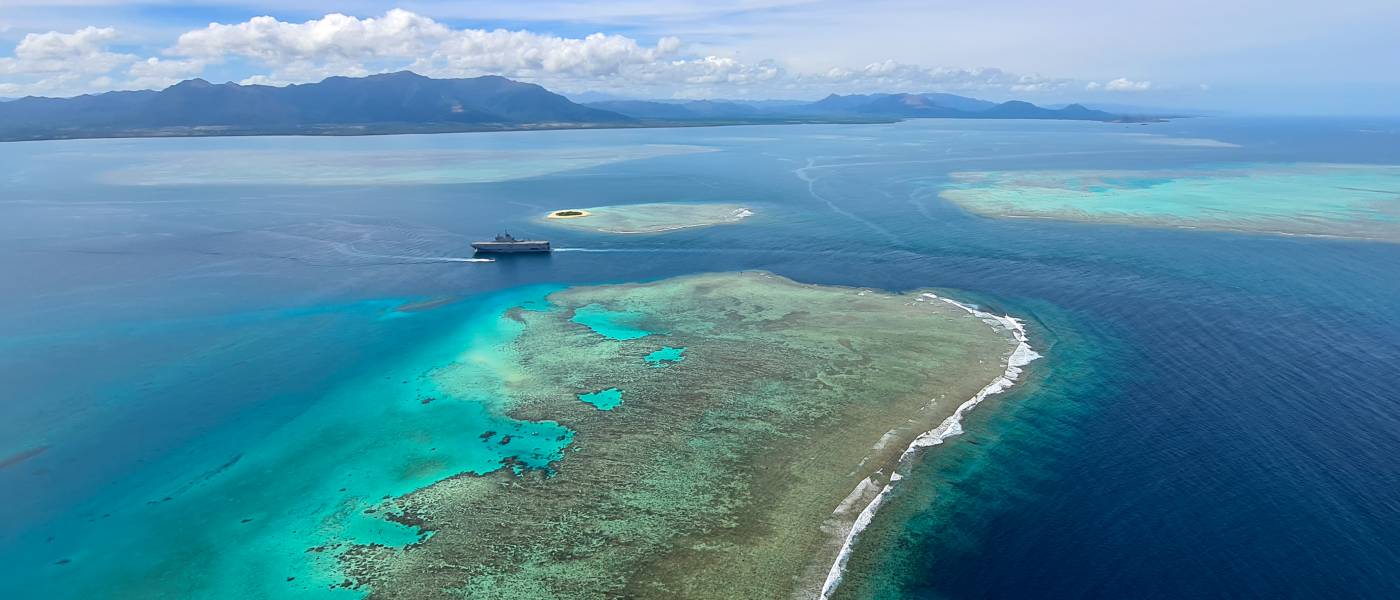The Ocean & Climate Platform has released a report dedicated to adapting Pacific territories to rising sea levels. It outlines the specific challenges faced in this area and highlights initiatives to overcome them. Last November, during the One Planet – Polar Summit held in Paris, the Sea’ties initiative (led by the Ocean & Climate Platform) presented its general recommendations to leaders of coastal cities and regions worldwide grappling with rising sea levels.
These recommendations stem from workshops conducted in five major regions (Northern Europe, the Mediterranean, the U.S. West Coast, West Africa, and the Pacific), involving local stakeholders and focusing on the study of locally implemented solutions. Following the Mediterranean, U.S. West Coast, and West Africa, the Ocean & Climate Platform has now released the report specifically dedicated to the Pacific region.
Existential Threat
In the Pacific island countries and territories, populations face « rapidly changing oceanic and coastal conditions due to climate change and are particularly vulnerable to sea level rise, » notes the Ocean & Climate Platform. In this region where many islands are located in low-lying areas, sea level rise is three times faster than the global annual average, and tropical cyclones are more intense.
Moreover, 90% of the population lives within 5 km of the sea, and more than half will be urban by 2050. Faced with the direct and existential threat of rising waters, the recent climate asylum granted by Australia to the 11,000 inhabitants of Tuvalu threatened with submersion before the end of the century obviously cannot be the sole response. But the challenges are numerous, starting with the lack of dedicated research and local data, which hinder the precise assessment of risks and the design of tailor-made adaptation strategies.
Scientific Knowledge and Traditional Approaches
Hence the interest in recognizing and mobilizing indigenous and local knowledge to address this gap, as indicated in the report. « In this perspective, the PACPATH research project (which notably includes the IRD) brings together a multitude of actors, including traditional leaders, to comprehensively map vulnerabilities. The New Caledonia Coastal Observatory (OBLIC), responsible for monitoring coastal dynamics, relies on participatory science involving local authorities, NGOs, and schools. »
Another obstacle to overcome is the lack of monitoring, evaluation, knowledge exchange, and lessons learned, particularly regarding nature-based adaptation solutions (NbS). « Despite their historical use and growing popularity in the region, their effectiveness and sustainability suffer from a lack of monitoring. For this reason, the ADAPTOM project (including the University of La Rochelle) has developed mapping and analysis of favorable conditions, potential, and externalities of NbS in the region. »
Spanning about sixty pages, the report delves into difficulties and implemented solutions from New Caledonia to Papua New Guinea, passing through Fiji, the Marshall Islands, and New Zealand. It emphasizes a point that had been particularly highlighted during the presentation of the overall recommendations at the One Planet – Polar Summit: because it is often driven by external actors, « adaptation encounters local realities. » The involvement of local populations during the conception, implementation, and monitoring phases of adaptation policies thus appears as a crucial condition to facilitate their acceptability.




